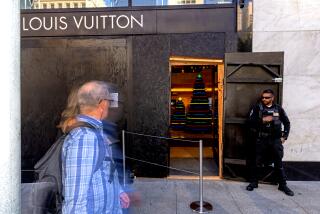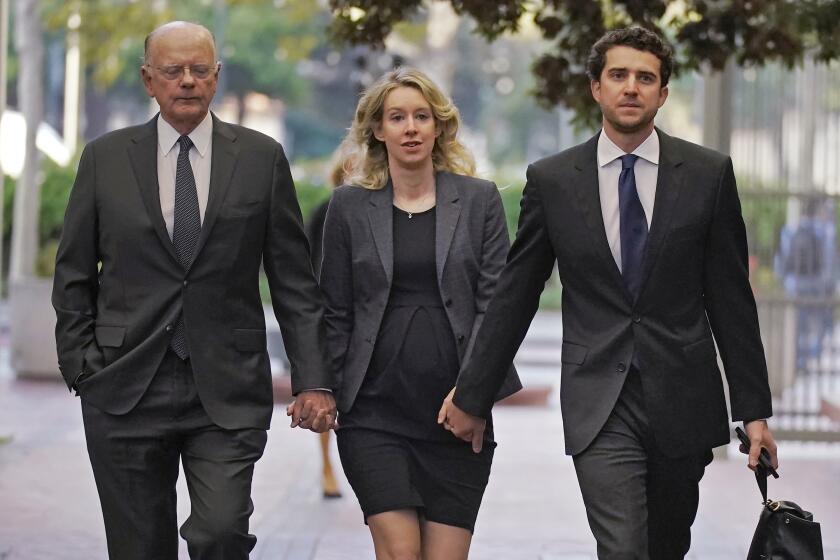DOWNTOWN : Pagers Speed Police Response to Trouble
- Share via
For Broadway merchants coping with shoplifters and uncooperative loiterers, police response time can seem more like police delay time.
“It would take an hour or two hours before a policeman came,” said Robert Clinton, vice president of Clifton’s Cafeteria. “By that time, the person who has been causing the problem could be long gone.”
Customers can walk away with a feeling that Downtown’s not safe, “and they might not come back,” he added.
Clinton and other merchants hope that will change with a new pager communication system that Los Angeles police and the Broadway Improvement Business District developed this summer to speed up police response.
Rather than calling the Police Department’s Central Division, which takes reports from across Downtown, merchants can now dial special telephone numbers to request non-emergency police service, said Estela Lopez, executive director of the merchants group Miracle on Broadway.
Between 10 a.m. and 5:30 p.m. Monday through Friday, merchants may call the Miracle on Broadway office number. After hours and weekends, they may dial a private toll-free number, Lopez said.
The reports will be entered into a computer that will automatically send the details to a patrol officer on Broadway via a pager.
The system, believed to be the first of its kind in the city, benefits merchants because they now have a more efficient way to contact police.
Officers also benefit because they no longer have to go through the hassle of communicating with a dispatcher to review details about a disturbance or petty crime, said LAPD Officer Manny Argomaniz.
“It cuts the response time in half,” said Argomaniz, who came up with the idea.
Officers are receiving calls within one or two minutes of an incident, compared with five to 10 minutes through dispatch.
Broadway merchants, who formed the city’s first business improvement district, spent more than $8,000 of their business taxes for the communication system, which includes three pagers, computers and phone lines, Lopez said. Police are paying for personnel costs.
An additional $32,000 of the merchants’ money has been budgeted for such items as bikes and uniforms for a police bicycle patrol on Broadway and a new police substation between 3rd and 4th streets, Lopez said.
Police, in turn, have assigned nine officers to patrol the area, dividing the Broadway district into three beats, Argomaniz said.
Clinton has personally seen the improvement in police response time.
Last month he called police after a transient began taking food off customers’ plates. The woman was belligerent toward customers and restaurant workers, Clinton said.
An officer responded in 2 1/2 minutes and took the woman into custody, he said.
“That is the type of service that the community on Broadway really needs,” Clinton said. “Now we’ve got something that really works.”
Some merchants from other parts of Downtown applauded the security efforts of their counterparts on Broadway.
“The whole city is in bad shape,” said Charles Woo, president of the Central City East Assn. and owner of a Downtown toy business.
“If some community is doing something about it, I would not sit back and be jealous. I would want to do something too.”
Woo said some merchants in the association have complained about police response time, and Central City East is considering forming its own business district and studying Broadway’s pager communication system.
But not everyone on Broadway shares the same enthusiasm about the new police program.
Joseph Lahijaniha, owner of Shoe Fantasy, said he doesn’t think the new pager system will help catch the shoplifters who often frequent his store.
“By the time you call the police, the guys are gone,” Lahijaniha said. “They’re in and out.”
More to Read
Inside the business of entertainment
The Wide Shot brings you news, analysis and insights on everything from streaming wars to production — and what it all means for the future.
You may occasionally receive promotional content from the Los Angeles Times.










